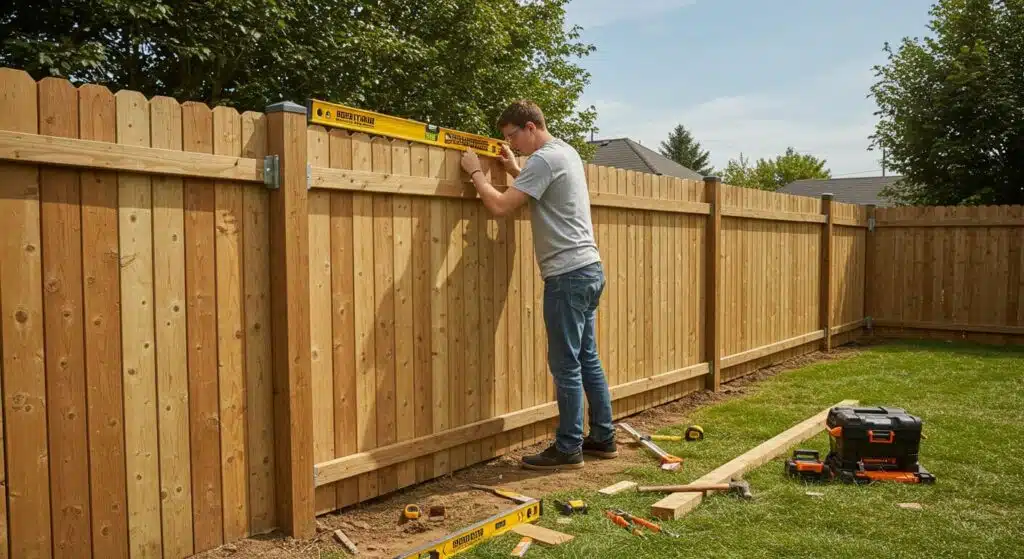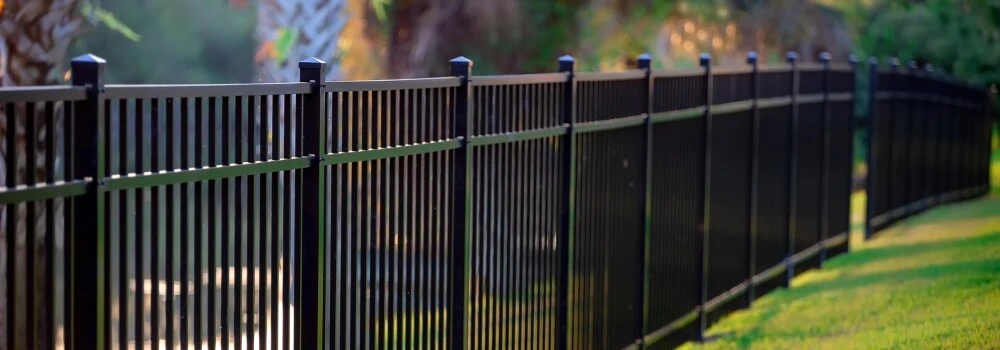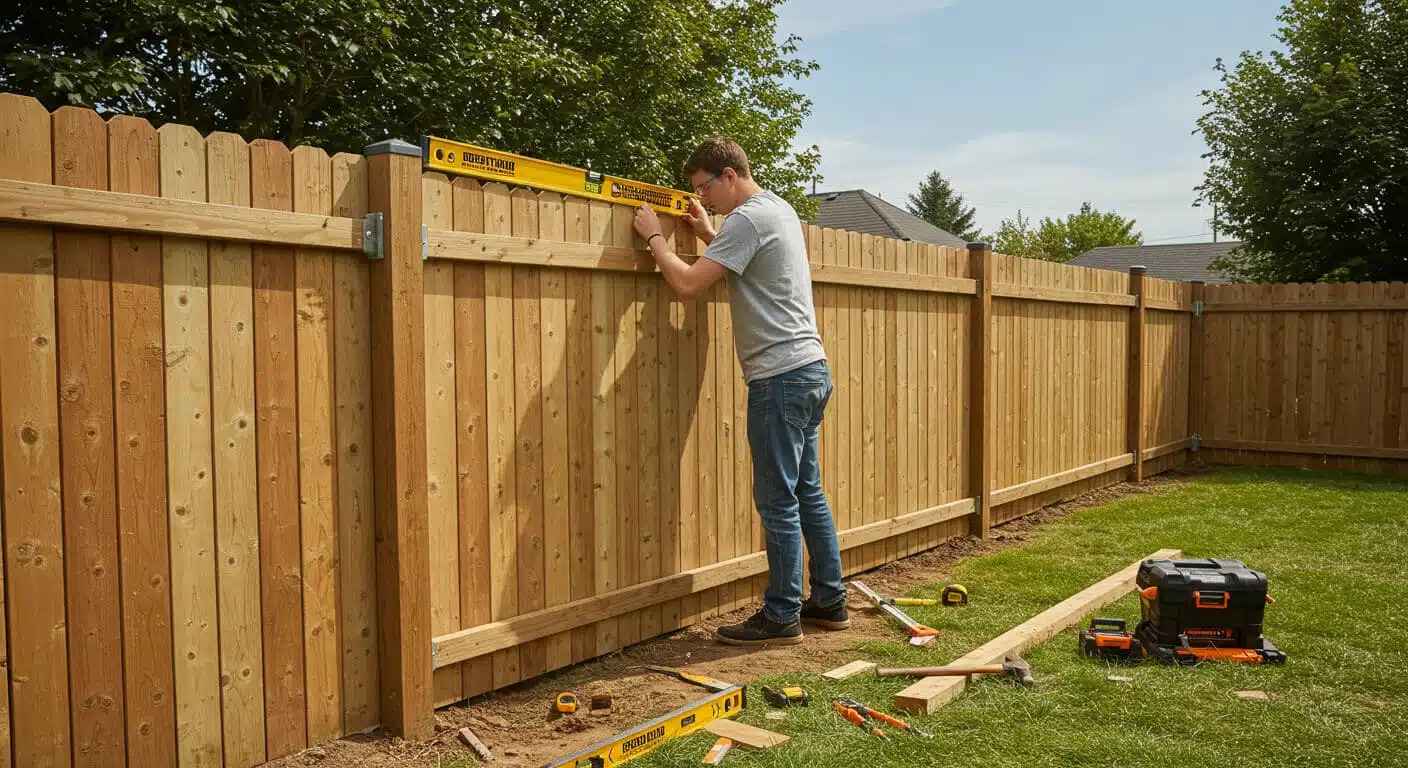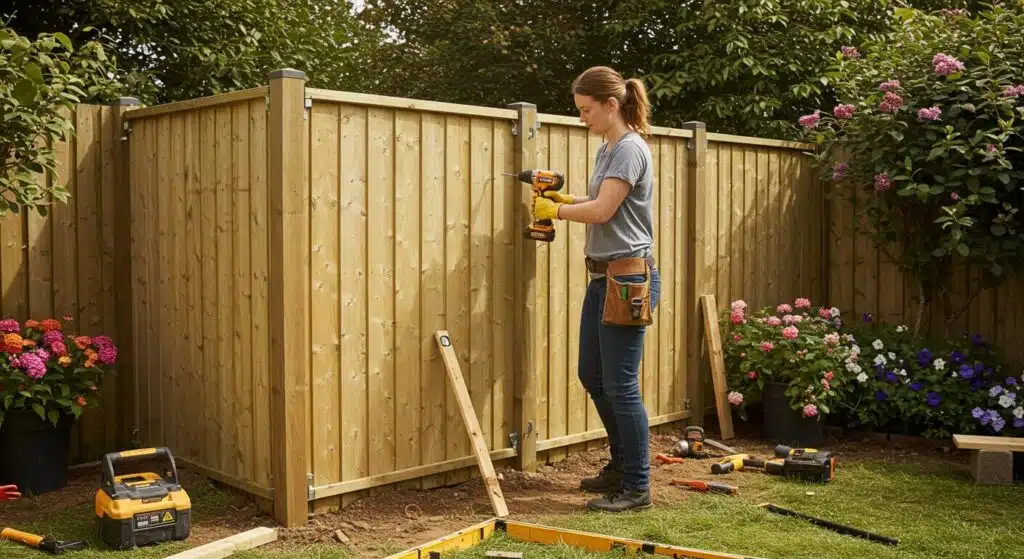
How to Build a Fence Like a Pro: A Complete Beginner’s Guide
If you’ve ever wondered how to build a fence like a seasoned pro, you’re in the right place.
Undertaking a DIY fencing project can feel overwhelming, especially if you’ve never grabbed a post hole digger. Each step requires thoughtful planning, from securing permits in Atlanta to choosing materials that balance aesthetics and durability. But with a clear roadmap and expert tips, you can create a sturdy, stylish fence that boosts your home’s value and curb appeal.
This beginner’s guide will walk you through essential preparations, tools, and step‑by‑step instructions tailored for Atlanta homeowners. Whether you dream of a classic wood picket, low‑maintenance vinyl, or a modern metal design, we’ll help you make informed choices and avoid common pitfalls.
At Bravo Fence, we’ve helped countless first‑time builders transform their yards into lasting landmarks. Let’s roll up our sleeves and get started on building your perfect fence!
Understanding the Basics of Fence Building in Atlanta, Georgia
Understanding local building codes and regulations is the first thing you need to do when you want to build a fence in Atlanta, Georgia. These rules tell you how high your fence can be, what styles are allowed, and where it can go next to your property line. If you do not follow these rules, you may get a fine or have to put up your fence again.
Besides city rules, you should also know about any rules your neighborhood makes. Checking for needed permits, the right property line, and any guidelines from your HOA is smart. This step will help you avoid trouble and save money.
Doing this work early helps make your fence installation go well and keeps you safe from problems later.
Common Reasons for Installing a Fence
Fencing is often needed when you want more privacy.
- A privacy fence keeps out people who might look into your yard. It gives you a quiet space to rest or spend time with friends or family. This can help turn your yard into a nice, private spot.
- Style is also one big reason people add a fence. Your fence style can work well with your home and look great. It can help the front of your house stand out more. There are a lot of styles to pick from, like modern lines or classic wood fences. You can choose what you like and think about how much time you want to spend taking care of your fence.
- There are other good reasons to add a fence. If the size of your yard means you need a clear border for pets or kids, it helps to build your own fence. This makes you feel sure they will stay safe.
No matter if you need privacy, style, or a safe space, fences add value to your property line.
Local Building Codes and Permit Requirements
Before starting a fencing project, knowing your local building codes is very important. These rules set the fence height and the styles you can use, helping your project follow city rules.
You also need to get the right permits. Doing this stops legal problems from happening. Every area has different permit requirements, and there will be steps to follow before you can do any fence installation. You should check Atlanta’s local regulations to be sure you are doing things right.
It is a good idea to find your property line before you build. This will ensure that your fence is in the right spot and that you do not have problems with your neighbor. Looking up and following the rules will keep your money safe and ensure that you are following the law while you work.
Choosing the Right Fence Type for Your Property
Choosing the right type of fence is vital to get the best results for your project. Look at each fence style and see which one goes well with your home and what you need it to do. Solid wood fencing or vinyl panels can be good choices if you want more privacy.
Also, pick materials that work best for you regarding how long they last and how much care they need. Consider whether you want your fence to make your place stand out or need something more useful. The style of fence should go well with your property. If you make careful choices, you will get a fence that looks good and works well.
Wood vs. Vinyl vs. Metal Fencing Options
When evaluating the type of material for your fence, three popular choices stand out: wood, vinyl, and metal fences.
| Material Type | Features |
| Wood Fence | Classic appearance, variety of styles, natural feel. Requires staining and sealing to extend its life. |
| Vinyl | Low-maintenance material, resistant to weather damage. Higher upfront cost, but long-lasting. |
| Metal Fences | Durable and robust, available in chain-link or wrought iron. May corrode if improperly treated. |
Wood fences are ideal for adding warmth to your property, while vinyl offers practicality with minimal effort. Metal provides unbeatable durability, but the choice depends on your priorities for style and maintenance.
Factors to Consider When Selecting Materials
When you pick the type of material for your fence, focus on how long it will last.
A wood fence looks good and has a classic feel, but it needs sealing often to keep it looking nice over time. Vinyl fences hold up well in bad weather and do not need much care.
Next, consider what best suits your budget. If you want to save money, a chain-link fence is a good choice. But using vinyl might cost more at first. It can save you money on repairs over a significant amount of time because it is strong.
You should also consider how much work you want to do to keep the fence up. Vinyl needs less care but may not look as warm as a wood fence. Wood takes some time to keep in good shape, but many people like how it looks.
Try to choose what gives you both the look and use you want for your home.
What You’ll Need to Get Started as a Beginner?
Starting a new fence project means getting ready. You will need the right tools to help with your fence installation, such as a post hole digger, measuring tape, and a power auger.
Along with these tools, gathering things like fence posts, panels, and concrete mix is important. These items help your fence stand firm. Make a simple checklist to make sure you have all that you need. If you plan ahead and get everything you need, you can build a solid, nice-looking fence, even if this is your first time.
Essential Tools and Equipment Checklist
With the right tools, fence installation gets a lot easier. Here’s what you need for a good fence project:
- Tape Measure: You use this for spot-on measuring of the panels, posts, and rail locations.
- Post Hole Digger: This tool is excellent for digging every post hole to the same size.
- Power Auger: It helps speed up the digging, which is handy if you have a big job.
- Hammer: Good to have when you need to make sure pickets and panels stay where you set them.
- Batter Boards: These help you get the right lines and keep things straight.
Make sure to grab these items, plus all the safety gear you need, before you start. With some simple preparation, your fence project can move along smoothly.
Gathering Quality Materials for Durability
The right materials are important for any wood fence.
Use strong fence posts, a solid top rail, and good gate posts. Make sure they all can handle the weather, and lastly, get them only from good suppliers.
To strengthen your new fence and help it withstand bad weather, mix treated wood with concrete. This allows it stay up and last for a significant amount of time. You should also check out wood fence panels. There are both custom and pre-made styles you can use to match what you like.
When you use high-quality parts, your wood fence has the best chance of lasting for years. You will have less work fixing it, and it will stay up looking good.
Step-by-Step Guide: How to Build a Fence Like a Pro
Starting a fence installation project may seem difficult at first, but you can do it by taking one small step at a time. Good planning and organization make any DIY privacy fence job much easier.
You need to mark out your area and then add panels by following each step in order. With careful planning and using the best methods for every task, you will put up a smart, strong boundary for your home.
Let’s go through each stage so you know what to do at every point, and your fence-building will go well from start to finish.
Step 1: Planning Your Layout and Marking Boundaries
Start your fence-building with some careful planning for the layout.
First, find out where your property line is. The best way to do this is by checking maps or asking for survey records. This will prevent any problems with your neighbors.
After that, use batter boards and some string to get a straight line for your fence. It helps to mark spots well using stakes and some paint where your boundary lines will be. You also have to consider ground-level changes to ensure your plan is good.
Be sure to check for utility lines, too. You can do this by calling 811 before you dig. They will tell you if there are any utility lines under the ground. When the layout is marked the right way, you can work smartly and not guess what comes next.
Step 2: Measuring and Spacing Fence Posts
Getting the right measurements is key when you set up a fence.
Start with a tape measure to find the post width where each one will go. Post spacing is usually between 6 and 8 feet, but this may change based on the fence height and the panel length.
Mark the rail locations to keep things even. The posts should stay the same distance apart. You want this for a good look and to ensure everything lines up. This step will help protect the fence and prevent problems later.
When you focus on taking good measurements, you set up a fence that looks good and lasts a long time.
Step 3: Digging Post Holes and Setting Posts in Concrete
Getting ready the right way helps your posts stay strong for a long time. Digging the post hole deep enough so it goes below the frost line is good. This helps give the most support. Put 6 to 8 inches of gravel at the very bottom. This helps water drain out before you pour in the concrete mix.
Use a post-hole digger or a hole digger like an auger. These tools help all your post-hole spaces stay the same size. Use a level to make sure the holes are straight up and down. Wait for the concrete mix to dry and harden before you move on to the next part of the build.
If the posts are anchored correctly, your fence will receive the support it needs and stay strong for a long time.
Step 4: Attaching Rails and Installing Panels or Pickets
Attach the fence rails tightly to the posts before you put up the wood fence panels. Start by setting the top rail. Measure the spot where it needs to go so you get it just right.
Put in the fence panels, ensuring they fit in well and are not loose. Try to keep the spacing even between all the panels. Use a partial panel to close the gap if you see a small space that a full panel can’t cover. Check each spot where you connect the pieces to be sure they are tight and won’t collapse later.
When you do this, you keep the fence strong. This brings all the parts of your project together and gives the wood fence a neat, finished look.
Step 5: Adding Finishing Touches—Gates, Post Caps, and Sealing
Adding little touches to your fence can really help it look great. To make it easy to get in and out, install fence gates. Make sure you use strong gate posts so that your gate works well.
You can put stylish post caps on top of each post for elegance. Seal the wood to help the fence last longer. Put on finishes that go with the style of fence you have. This also helps protect the wood and keep your fence looking good for a long time.
All these finishing touches do more than make your fence stand out. They also help your fence be ready for any type of weather, making the whole project look and work its best.
Final Thoughts
Building your own fence can feel like a big task at first, but once you understand the process, it becomes an empowering and rewarding project.
By learning how to build a fence step by step—from planning and layout to setting posts and finishing with gate installation—you can give your property both privacy and personality.
A well-built fence adds security and increases your home’s visual appeal and value. With the right tools, materials, and a little patience, even beginners can achieve professional-looking results that last for years.
As you take on this journey, remember that quality and attention to detail will always pay off. And if you ever feel stuck or prefer a helping hand, Bravo Fence is here to make the process easier and stress-free.
Call us today at (770) 966-9970 or fill out our online form to get a free consultation and take the first step toward your perfect fence.
Frequently Asked Questions
Do I need a permit to build a fence in Atlanta?
Yes, you will need permits for most fence installation jobs in Atlanta. It is important to follow local regulations when you put up a fence. You must check your property line and get the fence design approved first. Doing this helps ensure your fence follows local building codes.
How deep should fence posts be set in Georgia soil?
Posts need to be set below the frost line to prevent them from moving when the weather gets cold. To ensure each post hole is the right depth, use a hole digger or a post hole digger. First, put in 6 inches of gravel at the bottom of the post hole. Then, add concrete mix over that to give good support.
What is the best time of year to build a fence in Georgia?
Spring and late summer are great times to work on a fence project. At this time, the ground level is soft. Careful planning becomes easy with good weather and temperatures that are not too high. This means you can save a significant amount of time during the installation.
How do I maintain my fence to make it last longer?
Regular sealing of your wood fence helps prevent the weather from ruining it and can make it last longer. You should also check your fence panels from time to time to see if they need to be fixed, and clean them with water to keep them in good shape.
Are there any local regulations or permits required before building a fence?
Yes, when you start fence installation, it’s important to follow local regulations. These rules usually say how high or what style your new fence can be. Ensure you get the right permits and check that your fence follows local building codes. This helps you avoid any problems while putting up your new fence.



